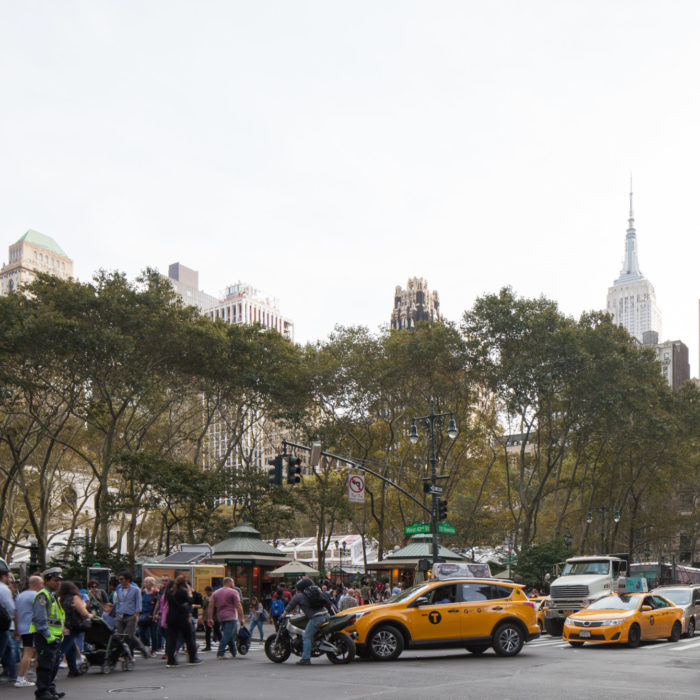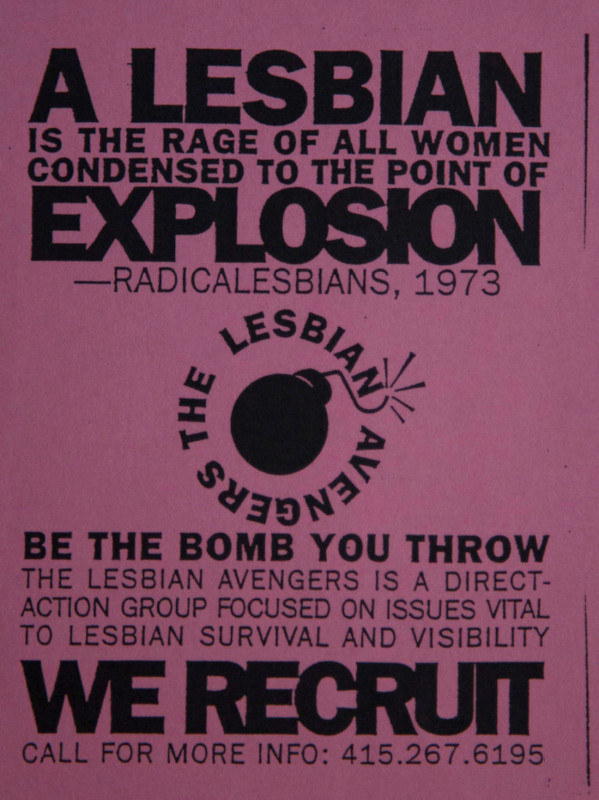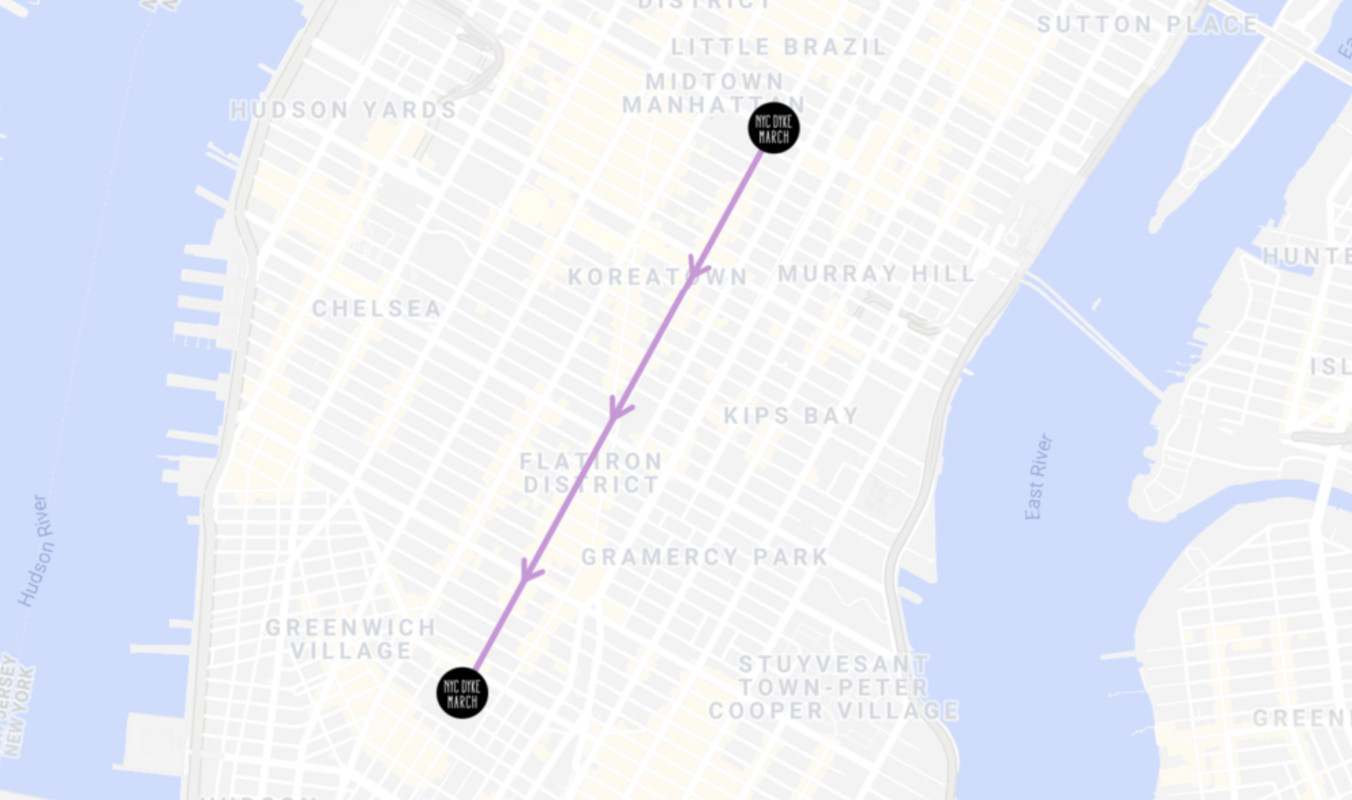
NYC Dyke March
overview
First organized by the Lesbian Avengers in 1993, the NYC Dyke March is an annual march from Bryant Park to Washington Square for self-identified dykes who advocate for increased lesbian rights and visibility (before 1996, the march ended in Union Square).
The NYC Dyke March is held the day before the NYC Pride March, but, unlike other Pride events, it has never had a permit and lacks corporate sponsors in order to promote lesbian-led grassroots activism.
History
After the first Dyke March on April 26, 1993, in Washington D.C., attracted over 20,000 participants, the Lesbian Avengers organized Dyke marches in other major cities nationwide, including New York City. Founded in 1992 at the LGBT Community Center, the Lesbian Avengers empowered lesbians to become activists and fight for lesbian survival and rights. The Lesbian Avengers expressed frustration in their 1993 “Dyke Manifeso” that lesbians had been on the frontlines of AIDS activism and the gay rights movements but had not received proper recognition for their contributions. The Dyke March thus allowed lesbians to demand greater visibility publicly:
This is a civil disobedience action. We feel it’s our right to march. The Pride march is great, but lesbians have specific rights we need to march for… We need our own space.
The NYC Dyke March is a protest rather than a parade. It has never had a permit or corporate sponsors, as the Lesbian Avengers believe protesting is a First Amendment right and want the Dyke March to be a community-led event. Therefore, they originally asked only women to march, later amending this request to include all self-identified dykes. In order to allocate space to the lesbian community, they have encouraged allies to support the cause financially or by attending the march on the sidelines.
The Lesbian Avengers held the first NYC Dyke March on the afternoon of June 26, 1993, in order to correspond with the Heritage Pride Rally, then held the evening before the NYC Pride March. The Lesbian Avengers therefore planned their route down Broadway from Bryant Park to Union Square Park where the Heritage Pride Rally was held. The theme of this march was “Lust for Power,” and the Lesbian Avengers asked marchers to fill out signs that said “I lust for…” A giant bed on wheels on which lesbians could publicly show affection served as a centerpiece of the march. About 600 to 1,000 people participated in the first march — a lower number than expected partially due to the limited time they had to plan.
The second annual NYC Dyke March in 1994, also known as the International Dyke March, was more successful and served as a catalyst for the creation of Dyke marches in other cities and countries. Coinciding with Gay Games IV and the 25th anniversary of Stonewall in 1994, this march attracted 20,000 diverse Dyke marchers from around the world, including many lesbians of color:
Dykes in combat boots, dykes in spike heels, dykes in bare feet — dykes everywhere… You could feel the pulsing energy in the air as thousands of women began filling up Bryant Park to proclaim that the lesbian community is a force the world cannot ignore.
Participants marched while chanting, “We’re here, we’re queer, get used to it!” It was a march where “every lesbian [could] be who she [was]” regardless of if she came alone, was part of a group, or had activist experience.
Since about 1996 when the Heritage of Pride rally moved to the week before the NYC Pride March, Dyke Marchers have walked down Fifth Avenue to Washington Square on the evening before that march. Participants sing “Oh when the Dyke goes marching” upon reaching 14th Street. A Dyke Ball, sometimes co-sponsored by WOW Cafe Theatre, often is scheduled after the march to further the celebration of lesbian identity. Despite lack of media coverage, the NYC Dyke March continues to attract thousands of participants each year.
Entry by Emily Kahn, project consultant (June 2020).
NOTE: Names above in bold indicate LGBT people.
Sources
Amy C. Branner, Laura Butterbaugh, & April Jackson, “There Was A Dyke March?,” Off Our Backs 24, no. 8 (August/September 1994). [source of second pull quote]
Duncan Osborne, “Dyke March Recaptures Fervor of Early Queer Activism,” Lesbian & Gay New York, July 20, 1997. [source of first pull quote]
Dyke Marches, April 1993 – July 2, 2003, Lesbian Herstory Archives/ Subject Files, Folder No. 04440.
“Herstory of the Dyke March,” Lesbian Avengers, accessed May 2020, bit.ly/2MpM9BD.
Judy Gerber, “Origins of the Dyke March,” Frontiers Newsmagazine 21, no. 6 (July 2002), p. 9.
Lesbian Avengers, “Dyke Manifesto,” 1993, accessed June 2020, bit.ly/302qFTF.
Meghan Collins, “Eating Fire: A Brief History of the Lesbian Avengers in NYC,” blog, Greenwich Village Society for Historic Preservation, November 12, 2014, bit.ly/308xkvg.
“The New York City Dyke March is a protest march, not a parade,” NYC Dyke March, accessed May 2020, bit.ly/2U1PY4r.
Do you have more information about this site?
This project is enriched by your participation! Do you have your own images of this site? Or a story to share? Would you like to suggest a different historic site?










